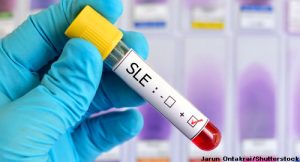 Better Understanding, Better Treatment
Better Understanding, Better Treatment
EULAR 2024 (VIENNA)—The exact etiopathogenesis of systemic lupus erythematosus (SLE) remains unclear, but we know that genetic risk, environmental exposures and immune dysregulation all play a role.1,2 In summer 2024, two studies furthered our understanding of the pathogenesis of this enigmatic disease. And if we can understand the pathogenesis of a disease, we can better diagnosis, treat and prevent it.
Genetics & Air Pollution: The Perfect Storm
“How did I get this, doc?” As rheumatologists, we all have different ways of responding to this question, and we all must answer it.
Personally, I start with relieving the patient of guilt. “First and foremost, I would like you to understand that this isn’t your fault. This [condition] is not because of something that you did,” I say.
Next, I use the perfect storm analogy. “There’s something in your genes that made you more likely to get this [condition] one day than somebody else.” And then, “there’s some kind of trigger. Something that wakes the immune system up and hits the gas, but somewhere along the line, forgets to hit the brakes.”

Dr. Xing
In June 2024, Xing et al. published a prospective cohort study online in Arthritis & Rheumatology that demonstrated an association between genetic susceptibility, air pollution and the risk of developing SLE.3 This finding makes sense because prior studies have shown that air pollution may influence SLE by “inducing oxidative stress, immune disorders and epigenetic changes, which can affect autoimmunity and inflammation response.”3,4 Other studies have demonstrated that short-term exposure to air pollutants is associated with an increased risk for SLE onset, disease activity and hospitalization.5 But only two Taiwanese studies have demonstrated an association between long-term exposure to air pollutants and the risk of incident SLE.6,7 Xing et al. provided long-term prospective data demonstrating this same association in Europe, where air pollution is significantly lower than in Taiwan.3
Xing et al. studied nearly half a million participants in the U.K. Biobank, a prospective cohort study with open accessibility, and the concentrations of different air pollutants to explore linkages between air pollutants and incident SLE. The majority of participants were white females in their 50s and 60s. The median follow up was 11.77 years.
The study found positive associations between air pollutant exposure and incident SLE, with adjusted hazard ratios ranging from 1.13 to 1.27 depending on the specific type of pollutant measured. Participants who had incident SLE were more likely to be female, non-White, former/current smokers and retired/unemployed with lower household incomes and increased air pollutant exposure than participants without SLE.

